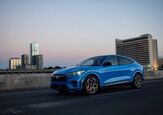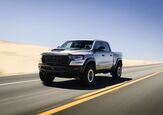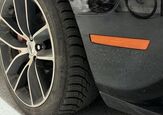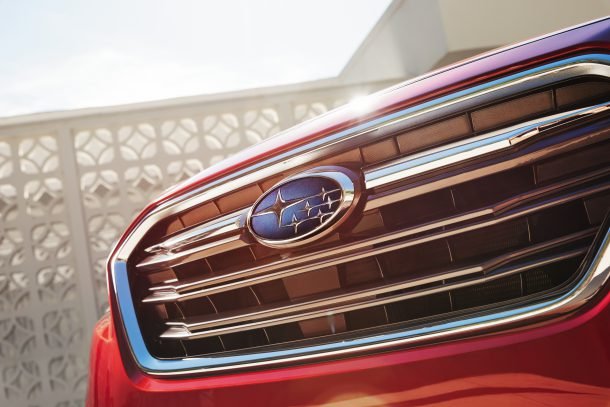#studies
U.S. Car Sales Are Down, Average Transaction Prices Are Up
Yesterday, we covered how the economic ramifications of the pandemic has negatively impacted the sales volume of electric vehicles (the ones that aren’t status symbols, anyway) in the United Kingdom. We’ll take a broader view of things today, focusing entirely on the general sales trends taking hold in the United States ahead of the Labor Day weekend.
Under normal circumstances, this would be a period where dealerships tempt the public with juicy discounts to clear out their lots for the subsequent model year. But the pandemic has left factories idle for months and vehicles in short supply. While that wasn’t an issue when everyone was first locked indoors, many states allowed their citizens to reclaim their autonomy as dealers sought new ways of selling without the face-to-face rigamarole of interacting with customers directly. We’re now in a situation where demand remains suppressed but has increased to a level where it outpaces the supply of many popular models — increasing the average transaction price of vehicles.
It’s not a great time to be shopping for a car.
Study: Global Recession Negatively Impacting EV Sales (Duh)
Today’s study comes straight from the memoirs of Captain Obvious. Apparently, an economic recession isn’t what you want when you’re vying to sell factory fresh automobiles beyond the confines of rock-bottom prices. There might even be a correlation between being broke and lacking the ability to purchase items in general. At least, that was the takeaway from a cutting-edge assessment recently conducted by Auto Trader in the United Kingdom.
In an attempt to keep tabs on the public’s level of interest in reference to electric vehicles, the outlet has been surveying people at semi-regular intervals. Back in January, it asked 2,300 consumers ‘waddya buying,’ only to learn that 17 percent had their hearts set on a battery electric vehicle. That’s impressive considering less than 10 percent of automobiles in the UK utilize electricity for propulsion and most of those happen to be hybrid models. But the trend toward BEVs has shifted rather dramatically since the COVID pandemic took hold.
A follow-up questionnaire from August (this time with 2,700 respondents) shows demand has waned immensely. Only 4 percent of respondents said they were planning on getting themselves a battery electric vehicle.
The Goldilocks EV: Survey Tracks Down the Most Appealing Nonexistent Electric Car
Many current EV owners might think their own vehicle is just right for their needs, and they’d probably be correct, but the take rate for such vehicles suggests the vast majority of the buying public feels otherwise. Low single-digit percentages continue to greet EVs in the North American market.
What qualities would a hypothetical EV need to posses to satisfy the broadest swath of the buying public? A survey conducted by Big Motor Oil set out to find out.
J.D. Power Reveals What Owners Find Annoying About Automotive Technology
Today’s automobiles are loaded with the kind of technology our grandparents could only dream about. Unfortunately, some dreams aren’t all they’re cracked up to be, and we’ve often bemoaned the many annoyances associated with modern vehicles.
J.D. Power recently shared its Tech Experience Index (TXI) Study, which has been modified to better assess specific features American drivers did and did not enjoy. The general takeaway seems to be that the average motorist feels pretty good about outward-facing cameras and anything else that improves a car’s outward visibility (handy in an era of extra chubby structural pillars).
However, the more intrusive safety inclusions that actively modify how the vehicle responds to the world around it didn’t seem to get nearly as much love, with many respondents suggesting they don’t trust the systems to behave in a predictable manner. It’s something we’re in broad agreement with and echoes many of the complaints we’ve heard from readers, friends, or rattling within our own skulls.
IIHS: Small Cars Remain, by Far, the Deadliest Ride for Teens
The other week we brought you a list of best used car buys for teen drivers. Driver safety factored heavily into the choices compiled by the Insurance Institute for Highway Safety (IIHS) and Consumer Reports, with the cheapest offerings obviously being car-like in nature.
With their lower prices, cars remains the ride of choice among teens, despite the new vehicle market shifting violently away from traditional three-box conveyances. They’re also the type of vehicle teens are most likely to turn up dead in, and the trend shows little change, despite the rapidly evolving auto landscape.
Are Modern Driving Assistance Features Unreliable? AAA Researchers Say Yes
The American Automobile Association (AAA) is recommending automakers limit the use of advanced driving aids after concluding they’re not really up to the challenge of providing reliable safety.
Over the past two years, AAA has focused on testing crash prevention systems to see if they’re all manufacturers claim — deciding that while many are useful in some instances, they’re far too inconsistent to be considered reliable safety nets. Like us, the group worries that making these features commonplace has created a false sense of security among drivers. While one might assume advanced driving aids have to be halfway decent to be put into vehicles, AAA’s pedestrian detection test from 2019 showed they’re anything but consistent.
On Thursday, America’s favorite motor club returned to report on its latest findings on five systems currently offered by the industry. For the test, AAA selected a 2019 BMW X7 with Active Driving Assistant Professional, 2019 Cadillac CT6 with Super Cruise, 2019 Ford Edge with Co-Pilot360, 2020 Kia Telluride with Highway Driving Assist, and a 2020 Subaru Outback with EyeSight. The group was sent to numerous testing sites in California, Utah, and Nevada, and given a 4,000-mile shakedown on public roads — where the outfit found the systems averaged a misstep or disengagement roughly every 8 miles.
Report: Automotive Industry Borrows $132 Billion Through Pandemic
The automotive industry has borrowed an estimated $132 billion since the world started taking the coronavirus more seriously, according to a recent analysis by Bloomberg.
Despite migrating around the planet months before anyone thought to close down a single airport or suggest masks were necessary, March is broadly viewed as the start of the pandemic in the Western World, as that’s when most governments started taking direct action and businesses started looking for handouts. Still, it’s exceptionally difficult to follow the money if you didn’t devote yourself entirely to the task of tracking payments while under shelter-in-place orders.
We do know that a lot of money was being thrown around, however. Car dealerships were among the largest recipients of Paycheck Protection Program (PPP) funds in the United States, garnering anywhere from $7.5 billion to $12 billion in government aid to maintain staff. Plenty of criticism over exactly where that money went arose as the press questioned which businesses were more deserving and who was just taking advantage of the system.
But it’s only the tip of the iceberg. PPP funds don’t need to repaid unless they weren’t earmarked entirely for payroll purposes; the government also used the program to send over $600 billion to support banks in extending low-interest loans to companies during the pandemic. The automotive industry was one of the largest beneficiaries of that arrangement.
Los Angeles Car Crime Reaches Record High
Los Angeles car thefts hit record highs in the second quarter of 2020, with some claiming the matter is the direct result of the coronavirus pandemic. Despite LA being infamous for car crime, the general trend over the last decade was a downward one — until very recently. A report from the USC Annenberg School for Journalism’s non-profit analysis publication Crosstown analyzed data from the Los Angeles Police Department, citing a 57.7-percent uptick in vehicle theft between April and June against the same period in 2019.
COVID-19 was theorized to have only been part of the problem. While the study notes that lockdown measures meant more vehicles sitting around unattended for longer periods of time, making them tempting targets for thieves, it also references the California Judicial Council’s passing of new zero-dollar bail policy as a contributing factor. Enacted in April, Los Angeles County District Attorney Jackie Lacey said the measure was taken so courts could set individual bail for those accused of looting. Meanwhile, most non-violent crimes (and some low-level felonies) are supposed to be bail-free, allowing jail populations to be kept at a minimum during the pandemic.
Dodge Dubbed Most Appealing Mainstream Brand by J.D. Power
Dodge was deemed the mainstream automotive brand with the most appeal in a recent survey conducted by J.D. Power. While that likely means a quadrant of our readers will probably discount it outright, these accolades are always fun to mention so they can be picked apart in the comments. Still, it really shouldn’t be all that bewildering to see Dodge ranking high on the list. The brand’s fleet of V8-equipped products certainly sets it apart from its rivals, even if its lineup isn’t quite so varied as its historic rivals.
The conflict comes when you see what Dodge is surrounded by. J.D Power’s Automotive Performance Execution and Layout (APEAL) study tabulates owner assessments of vehicles after 90 days of ownership using some pretty broad metrics ( available here). The goal here is to uncover which brands offer the best overall experience. Apparently, Dodge owners aren’t quite as happy with their purchase as those who went to a Porsche dealership. Hardly surprising. Yet we were fairly gobsmacked to see the same was true for both Lincoln and Cadillac.
Tuning In: Nielsen Podcasting Study Shows Promise for Automotive Advertisers
When I was a young lad, I had a box set of the goofball quiz show You Bet Your Life. Hosted by deceased comedy legend Groucho Marx, the program aired on both television and radio just as they were beginning to swap roles in terms of market dominance in the mid-20th century.
After ribbing guests, Marx would pause to acknowledge the sponsor. More often than not, they were Chrysler products — especially the now defunct DeSoto brand. While I had no idea if Groucho actually cared about the cars beyond the paycheck they offered, something about the format of having someone you actually liked pushing the product stuck with me. I’ve been a fan of DeSoto for years, despite having been born decades after it stopped existing as a brand.
It seems things might be coming full circle. With television now losing prominence to the internet, advertisers, in search of new avenues for income, and have stopped at podcasts. A recent Nielsen study estimated that roughly half of would-be vehicle shoppers visited a website for more information if they heard about it via an audio-focused medium with a strong personality behind it.
J.D. Power Says Drivers Still Loyal to Subaru, Lexus
J.D. Power’s Automotive Brand Loyalty Study dropped this week, with Subaru and Lexus predictably topping the charts. Subaru actually edged out Toyota by a hair in the mainstream segment by retaining 60.5 percent of its owners, and is assumed to be aided by younger generations just getting into vehicle ownership. This is something we can back up anecdotally, as many drivers look back fondly at the nameplate and are eager for a second helping.
If your author had a nickel for every person that happily reminisced about the hand-me-down Subaru Legacy or Forester wagons they drove during their formative years, he would have a jar full of coins wasting space on a shelf somewhere because nickels aren’t particularly valuable.
Study Says Autonomous Taxis Will Cost Users More Than Car Ownership
When Sir Thomas More coined the term “utopia,” he lifted two words from Ancient Greek that roughly translate into “not a place.” Turns out people from the 16th century still understood satire, perhaps better than we do today. After all, we are the ones operating under the assumption that we can remap society in order to build consequence-free transportation network without a shred of humor to keep us grounded.
We may not need satire in this instance, however. A new study published in the American Journal of Public Health asks questions about how just effectively the shift to autonomy will benefit society as a whole. Industry leaders have broadly framed the shift toward self-driving as kicking down the door to an idyllic universe where no one wants for transportation, with autonomous taxis serving as the first wave of this planned paradise. The reality may be vastly different that what’s being sold, however.
Does It Have to Be Said? Getting Hit by an SUV Is Worse Than Getting Hit by a Car, Study Finds
From the “No Shit” files comes a new study from the Insurance Institute for Highway Safety. In it, researchers reach an obvious conclusion that should surprise no one: tall, blunt-faced vehicles are far more likely to damage your sensitive, delicate body than low-riding passenger cars.
Pick that jaw up off the floor.
Quick Sales Rebound? Forget It, Says Bank of America
U.S. auto sales were already heading into a long-predicted cooling-off period when that spiky little virus arrived, throwing economies into disarray. As a result of the coronavirus’ impact on world markets, including that of the U.S., a return to the kinds of volume the industry enjoyed over the past few years won’t take place overnight.
According to a new Bank of America study, good times won’t really return until the middle of the decade — and even then, not to levels seen last year.
IIHS Denounces Concept of Total Safety From Autonomous Cars
When the United States began passing legislation allowing automakers to begin testing self-driving vehicles on public roads, it was framed almost entirely as a safety issue. Proponents claimed that the only way to eliminate roadway fatalities was to take the human brain out of the equation and let cars drive themselves. Having enacted a similar no-thinking policy themselves, legislators agreed — pleased to have ensured a death-free future on little more than empty corporate promises.
At the time, we were still complaining about the unreliable nature of advanced driving aids, and how such systems seem custom-made to dull your reflexes behind the wheel. There was a sense that, if everything went perfectly, maybe autonomous vehicles (AVs) could reduce accidents by previously unheard of levels. That feeling didn’t last particularly long here at TTAC and, by 2018, we started noticing we weren’t alone.
The Insurance Institute for Highway Safety (IIHS) grew increasingly critical of AVs starting a couple of years ago. On Thursday, it released a report claiming the idea of a no-crash future spurred by automation is a fantasy. Instead, the IIHS says cutting-edge technology will likely struggle to stop just a third of all accidents.






























Recent Comments